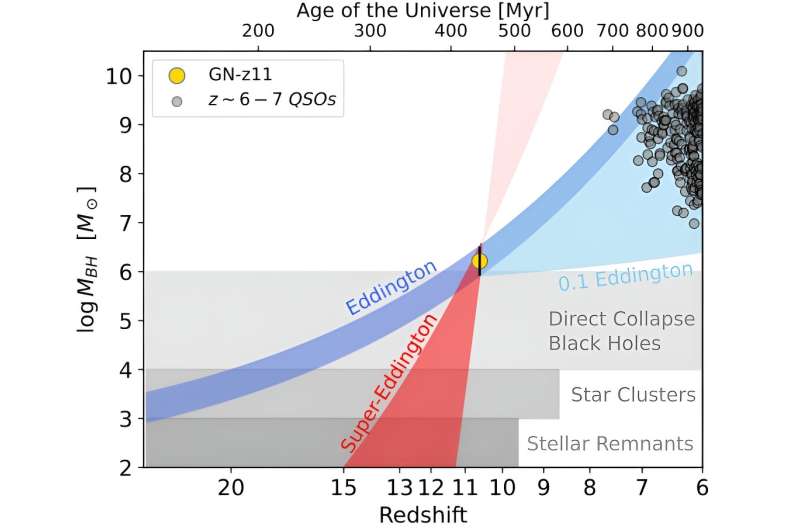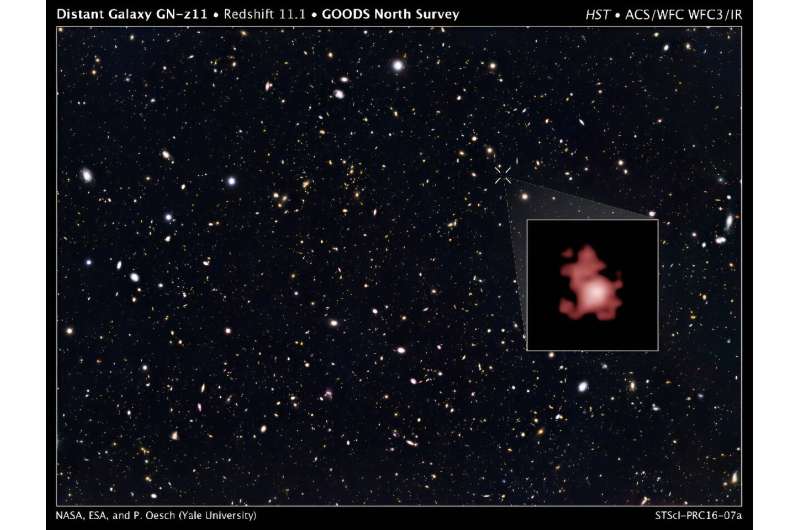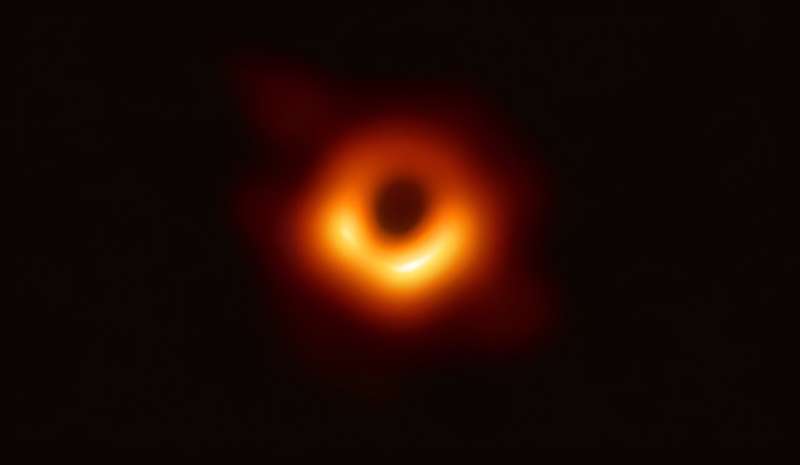This article has been reviewed according to Science X's editorial process and policies. Editors have highlighted the following attributes while ensuring the content's credibility:
fact-checked
peer-reviewed publication
trusted source
proofread
Astronomers detect oldest black hole ever observed

Researchers have discovered the oldest black hole ever observed, dating from the dawn of the universe, and found that it is 'eating' its host galaxy to death.
The international team, led by the University of Cambridge, used the NASA/ESA/CSA James Webb Space Telescope (JWST) to detect the black hole, which dates from 400 million years after the Big Bang, more than 13 billion years ago. The results, which lead author Professor Roberto Maiolino says are "a giant leap forward," are reported in the journal Nature.
That this surprisingly massive black hole—a few million times the mass of our sun—even exists so early in the universe challenges our assumptions about how black holes form and grow. Astronomers believe that the supermassive black holes found at the center of galaxies like the Milky Way grew to their current size over billions of years. But the size of this newly-discovered black hole suggests that they might form in other ways: they might be 'born big' or they can eat matter at a rate that's five times higher than had been thought possible.
According to standard models, supermassive black holes form from the remnants of dead stars, which collapse and may form a black hole about a hundred times the mass of the sun. If it grew in an expected way, this newly detected black hole would take about a billion years to grow to its observed size. However, the universe was not yet a billion years old when this black hole was detected.

"It's very early in the universe to see a black hole this massive, so we've got to consider other ways they might form," said Maiolino, from Cambridge's Cavendish Laboratory and Kavli Institute of Cosmology. "Very early galaxies were extremely gas-rich, so they would have been like a buffet for black holes."
Like all black holes, this young black hole is devouring material from its host galaxy to fuel its growth. Yet, this ancient black hole is found to gobble matter much more vigorously than its siblings at later epochs.
The young host galaxy, called GN-z11, glows from such an energetic black hole at its center. Black holes cannot be directly observed, but instead they are detected by the tell-tale glow of a swirling accretion disk, which forms near the edges of a black hole. The gas in the accretion disk becomes extremely hot and starts to glow and radiate energy in the ultraviolet range. This strong glow is how astronomers are able to detect black holes.

GN-z11 is a compact galaxy, about one hundred times smaller than the Milky Way, but the black hole is likely harming its development. When black holes consume too much gas, it pushes the gas away like an ultra-fast wind. This 'wind' could stop the process of star formation, slowly killing the galaxy, but it will also kill the black hole itself, as it would also cut off the black hole's source of 'food.'
Maiolino says that the gigantic leap forward provided by JWST makes this the most exciting time in his career. "It's a new era: the giant leap in sensitivity, especially in the infrared, is like upgrading from Galileo's telescope to a modern telescope overnight," he said. "Before Webb came online, I thought maybe the universe isn't so interesting when you go beyond what we could see with the Hubble Space Telescope. But that hasn't been the case at all: the universe has been quite generous in what it's showing us, and this is just the beginning."
Maiolino says that the sensitivity of JWST means that even older black holes may be found in the coming months and years. Maiolino and his team are hoping to use future observations from JWST to try to find smaller 'seeds' of black holes, which may help them untangle the different ways that black holes might form: whether they start out large or they grow fast.
More information: Roberto Maiolino et al, A small and vigorous black hole in the early Universe, Nature (2024). DOI: 10.1038/s41586-024-07052-5. www.nature.com/articles/s41586-024-07052-5. On arXiv: DOI: 10.48550/arxiv.2305.12492
Provided by University of Cambridge





















